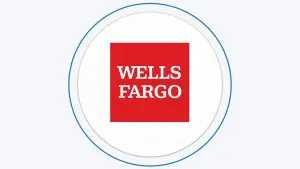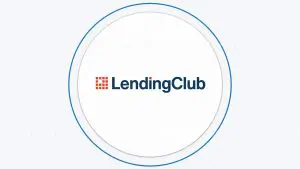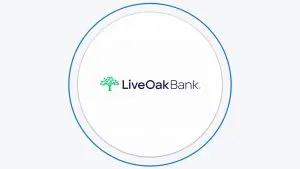Table Of Content

Savings accounts provide people with a safe and secure location to keep their hard earned income for a rainy day or for retirement. Now more than ever, savings accounts are in high demand as rates are currently higher than at any point over the last 10 years.
Along with savings being drawn down at a rapid pace as a result of the inflationary pressures, there has not been a time where savings is more important than now over the past few decades.
How Do Savings Accounts Work?
Savings accounts are a fairly straightforward financial concept. The primary purpose of them is to ensure the preservation of your money, not to generate income from it.
While savings accounts do provide some interest, there are other financial instruments that are more tailored to generating returns.You can open a savings account with a bank or a credit union and deposit your money into this account.
Once you have a balance, the bank will begin paying interest on this account. You will also be able to move your money around through transfers, deposits, withdrawals, but these accounts aren’t meant for frequent transactions.
As your money sits in the account, the banks will pay you interest at a rate corresponding to the APY, or Annual Percent Yield. This rate typically is paid either annually or semiannually and compounds.
There are many actions that are done behind the scenes with savings account funds by banks, but this is irrelevant for your purposes. Other than in drastic economic shocks where the liquidity of a bank is in question, you will be able to withdraw your funds whenever you want.
Pros | Cons |
|---|---|
Keep Your Money Safe
| Minimum Balance Requirements to Waive Fees |
Earn Interest On Your Balance | Low Interest Rate Compares to other Account Types |
Easy Access To Your Money | No Tax Savings |
Automate Your Saving | FDIC Limitations |
Variable Rates | |
Less Temptation To Spend | |
Low Minimum Deposit |
Savings Account Benefits
There are a number of positives about having a saving account. Lets get into some of the biggest benefits of having a saving account.
- Keep Your Money Safe
Savings accounts are one of the most secure places to keep your money. Nearly every single major bank is insured by the FDIC, which covers losses up to $250,000.
While this is the maximum amount insured, if you have more, you can spread it across a number of different accounts to keep every penny insured.
- Earn Interest On Your Balance
Hiding your money under a mattress may keep your money as safe as in a savings account, but you will not earn interest this way. By simply keeping your money deposited into an account, you can earn interest.
While the rates are fairly low, the power of compound interest will take over, and albeit slowly, your money will grow without you having to lift a finger!
Financial Institution | Savings APY |
|---|---|
American Express
| 4.30% |
Marcus
| 4.40% |
Capital One
| 4.35% |
Synchrony Bank
| 4.75% |
Discover Bank
| 4.25% |
Lending Club | 5.00% |
Ally Bank
| 4.25% |
Upgrade
| 5.21% |
- Easy Access To Your Money
Savings accounts are one of the most liquid financial instruments, meaning you can take out your money nearly whenever you want.
With an online savings account, you can access your funds 24/7, and with a physical location, you can access the funds whenever the branch is open.
This gives you the peace of mind that if any unforeseen events occurred, you can reach your saving.
- Automate Your Saving
With the implementation of technology, it has never been easier to save for your future. With many savings accounts, you can automatically set up transfers to move a portion of your paycheck into your savings account.
Building up your savings account without having to worry about constantly making manually transfers makes the process of accumulating savings much less stressful.
- Variable Rates
This has been a big downside over the past few years with the falling rate environment, but this can actually become a benefit over the next few years as rates rise.
Saving accounts rates are typically not locked in, so they can fluctuate depending on market conditions, leaving more uncertainty with your money.
- Less Temptation To Spend
Savings accounts are designed to accumulate for the future and not to be spent. These accounts typically do not come with a debit card, which makes withdrawals and spending linked to the account much easier.
Savings accounts make you go out of your way more to take out funds than compared to checking accounts, so if you know you are prone to this, savings accounts can help keep you accountable.
- Low Minimum Deposit
It is a common misconception that you need a lot of money to open a savings account.
Many savings accounts can be opened with as little as $25 in the account, and some may even be opened with less. With the ease and low threshold to open a savings account, there is nothing stopping you!
Top Offers From Our Partners
Savings Account Drawbacks and Limitations
While savings accounts provide numerous valuable benefits to consumers, there can be a few downsides to using a savings account. Lets get into a few of these to see how they can affect you.
- Minimum Balance Requirements
With most savings accounts, you are required to keep an average daily beginning balance above a certain amount, and if you do not, you will be charged a fee.
The degree of this fee usually is not too severe, with fees typically ranging from $5-$25, but this can be an added stressor to the management of your account while accumulating losses over time.
- Low Interest Rate Compares to other Account Types
Savings accounts offer lower interest rates compared to CDs. The current average APY on saving accounts is 0.59%.
This rate is significantly below the current inflation rate, which means than even though the nominal value of your money is increasing, your purchasing power is going down earning this rate.
- Withdrawal Limitations
As a result of Regulation D, you are only limited to six withdrawals per month. If this number is exceeded, you will be levied fees, or the account type can be changed to a checking account, which will lower the interest rate.
Although savings accounts are meant for saving and not spending, this shouldn’t be too much of an issue, but problems could arise if cash is needed in a hurry.
- No Tax Savings
Many people keep their retirement savings in an IRA account, which is a tax-deferred vehicle.
Traditional savings accounts do not have the same tax saving benefits as other accounts, meaning that your hard earned retirement savings will be taxed with a saving account.
- FDIC Limitations
Accounts with above $250,000 in balances are only covered up to that threshold. Anything above this amount is not protected by federal insurance.
While this can be gotten around by spreading your money across different accounts, it complicates the process and adds extra steps to managing your savings.
How to Set Up a Savings Account?
Setting up a savings account can be tricky, so here are a few steps to follow that can help you through the process.
- Choose the best account for you – There are many different types of savings accounts, each with their own unique characteristics. Understand what you are looking to get out of your savings account and what the most important features are for you. Based on this, choose the account that best fits your needs.
- Gather required documents – You will need some documents on hand to complete the application. The most important documents and pieces of information you need are a driver license or passport, social security number, proof of address, and contact information. Have these ready to streamline the application process.
- Decide on single or joint account – You will be asked whether the account is just for yourself, or if the money is shared with another person. If you want the money to be shared with someone else, normally a spouse or child, then choose a joint account. There are a few benefits with a joint account such as easier access to funds and a higher level of FDIC insurance.
- Accept terms and conditions and submit application – Once the application is complete, you will be shown the terms and conditions of the bank. Read these over and make sure there is nothing in there that you do not like. If everything seems acceptable, its time to submit your application!
- Fund your account – After your application has been accepted and your account is set up, you should start depositing funds into the account. Some banks require a minimum initial deposit, so a deposit right away may be required. You should also get into the habit of having money in the account to avoid monthly fees.
How to Manage a Savings Account?
Manging a savings account doesn't require too much attention, but it's worthwhile to pay attention to some things:
- Set a plan and stick to it – Saving is easy, all you have to do it take a part of the money you earn, put it in a savings account, and you’re done. The best way to do this is to set a plan to move a certain percentage of your income into your savings each year.
Before you start saving, establish what this percentage is and stick to it. If you get a raise, you can increase this percentage even more. Stay consistent with your plan and don’t save less one year just because you feel like it.
- Don’t dip – The magic of compound interest is only realized if the balance has been compounded for a long time. The longer money is being compounded, the faster it will grow. Dipping into your savings and reducing your balance will slow the pace at which your money will grow. Stay consistent with this and act like the money in the account isn’t yours until you need it.
- Utilize technology – With the use of technology, you can automate nearly every activity in your account. This can help you stick to your plan without even having to think about it!
You can set up automatic deposits from your paycheck directly into your savings account, so you don’t have to constantly be reminded to do this. You can also receive alerts to monitor your account to avoid paying fees.
FAQs
What are high yield savings accounts?
High yield savings accounts are accounts that pay a higher APY than traditional savings accounts. These accounts typically set their interest rates about 20 to 25 times higher than the average savings account rate.
These accounts provide you with the opportunity to grow your money faster than in traditional accounts.
What is APY on a savings account?
The APY on a savings account is the interest rate earned on your account in one year. APY stands for Annual Percent Year. The higher the APY, the more money you will earn.
Does a saving account have a routing number?
Savings accounts have routing numbers in the same way checking accounts do. These routing numbers are used by banks during transfers to identify the specific banks involved in the transaction.
You can find your account’s routing number in checks associated with the account or online in your account information tab.
How many savings accounts can you have?
There is no limit set on the number of savings accounts you can have at a time. While there is no limit set, the recommended number of accounts to have is around four.
Depending on how much money you have spread out across the accounts, you may want more or fewer, but this is a general rule of thumb.
What is a savings account used for?
Savings accounts can be used for numerous purposes based on the person, but the primary purpose is to keep money safe that you do not intend on spending it right away.
Savings accounts are often used for retirement savings, college tuition savings, emergency funds, or preparing for large purchases.
Can you add to an online savings account regularly?
You can add money into your savings account whenever you’d like. It is recommended that you deposit money into your savings account at regular intervals to get in the habit of saving and to accumulate a large balance quickly.
Is a savings account a liquid asset?
Savings accounts are an extremely liquid asset. The only limit on withdrawals is setting the maximum number of withdrawals in a month to six, but this can easily be avoided by planning your spending.
If you ever need to withdraw money from your savings account, it is almost guaranteed that you will be able to.
What do I need to open a saving account?
There are a few key documents that you must have to open up a savings account that are used to verify your identity and your address. For proof of identity, you need a government issues ID, drivers license, social security card, or passport.
For proof of address, you need a lease document, mortgage document, utility bill, bank statement, or any other official form that can verify your residence.















